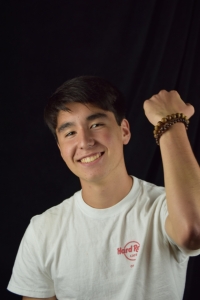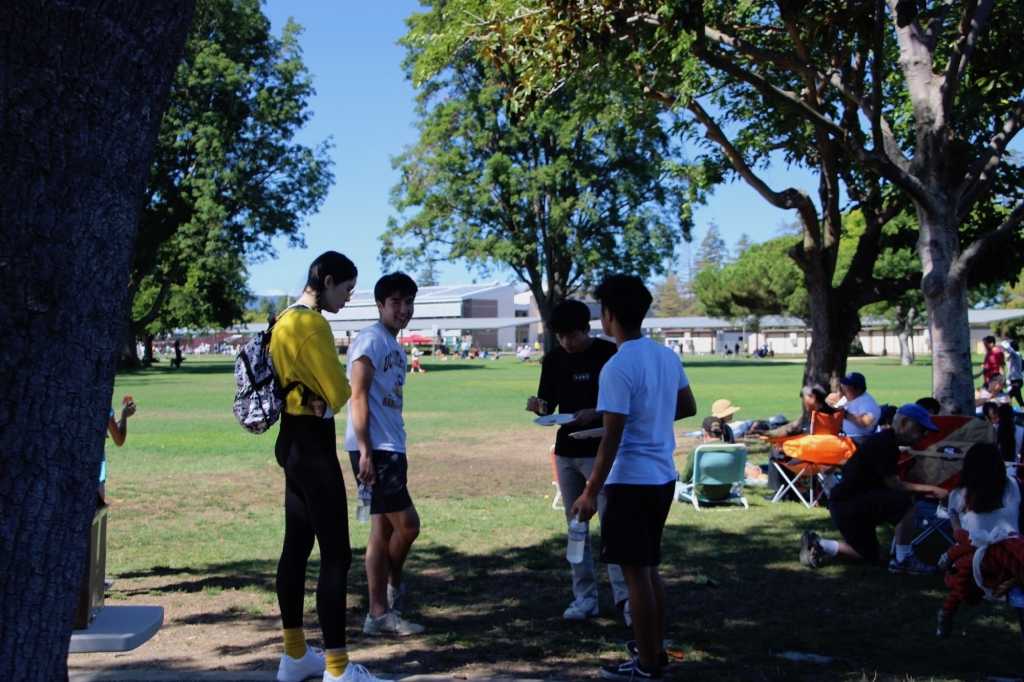On a late Sunday morning, members of the Palo Alto Buddhist Temple gather at the picnic tables of Mitchell Park. Children toss a frisbee in an open field while parents and grandparents prepare food and chat. On the tables are an assortment of vegetables, hamburgers, hotdogs and onigiri.
This is Palo Alto’s Buddhist community: a small and welcoming temple that practices Jodo Shinshu Buddhism.
The Buddhist community is surrounded by common misconceptions that stem from a lack of western recognition.
“Where a lot of other religions like Christianity are pretty customary and widely recognized as part of our culture in America, Buddhism is often seen as more foreign and alien,” president of the Youth Buddhist Association, junior Thomas Mcgall says.
In fact, the Palo Alto Buddhist Temple is aiming to make Buddhism a more accessible religion in Palo Alto.
“Our primary focus is to make Buddhism, especially our Jodo Shinshu sect of Buddhism available to the wider community,” resident minister Reverend Koyama says.
About the temple
According to the Palo Alto Buddhist Temple’s website, the Palo Alto Buddhist community was founded in 1914 when a group of Buddhists from San Francisco pitched the creation of a place for their faith in Palo Alto. The community started with small group services in the comfort of each other’s homes, but as the Buddhist population increased, it became clear that there needed to be a temple where everyone could gather. As a result, the Palo Alto Buddhist Temple was built in 1954. The resident minister of the temple, Reverend Koyama, has been in charge since June of 2013.
According to Koyama, the temple’s large Japanese American population can be attributed to the anti-Asian discrimination that swept the United States post World War II. To create their own community away from the prejudice, Japanese families congregated at the Buddhist temple.
After the civil rights movement of the 1950s and 60s, Japanese Americans were able to integrate themselves more into local communities, allowing Buddhist temples to expand their congregation. Now, the temple serves people from various backgrounds.
“We have potlucks [where we] invite people to share their ethnic background by bringing some of their own comfort and soul food,” Koyama says.
The temple prides itself on its tight knit community. Palo Alto Buddhist Temple President Don Gee has been attending the temple since 2000. Although he lives in Milpitas with closer options, Gee continues to practice at the Palo Alto Buddhist Temple because of its friendly members and acceptance of all nationalities
“I’ve always been a Buddhist I just didn’t realize it until I was in my 30s.”
— Don Gee, Palo Alto Buddhist Temple president
Gee was able to learn and understand the Buddhist teachings better at the Palo Alto Buddhist Temple. Other temples will often teach in another language. For Gee, this was a dealbreaker.
“I need to hear the message in English in order for me to continue learning and most Chinese temples won’t,” Gee says.

Youth in Buddhism
The multicultural population of the Buddhist temple is exemplified in the teenage members that pride themselves as part of the Youth Buddhist Association. These teens create a bond that encourages a continued participation in temple.
“We just go on trips to places like retreats,” McGall says.
Many members started practicing Buddhism because of relatives, and they wished to find a community similar to the one they had been a part of back home.
“They [my parents] were aware of Buddhism, but they weren’t Buddhist before they came,” YBA member Elena Atluri says. “I think it was a way for my mom to feel more connected to her Japanese community.”
McGall also became invested in YBA for its connection to the Japanese community. For McGall, going to temple offers a lesson not only in Buddhist principles but also in Japanese culture.
While this connection to heritage has brought in members to the Palo Alto Buddhist Temple, leadership at the temple is trying to expand its membership to more than just the Japanese community. They are hoping to encompass a wider range of younger members that will keep the temple and faith running for future generations. To accomplish this, Gee hopes to reach out to a youth community that will carry on the faith for future generations.
Buddhism to the individual
The Palo Alto Buddhist Temple also encourages personal interpretation and development of Buddhist faith on a more individual level.
“In Buddhism, people can have their own ideas and still gather at the same places and go to the same temple,” McGall says.
“Buddhism is often seen as more foreign and alien.”
— Thomas McGall, Youth Buddhist Association president
Buddhism can vary depending on the person, but because of the open community, anyone who identifies as Buddhist can find a place to continue their practice. For Gee, the Palo Alto Buddhist temple discusses the principles he values most. He found that Buddhism always resonated with him and always made him feel comfortable and welcomed.
“The thing is, I’ve always been a Buddhist I just didn’t realize it until I was in my 30s,” Gee says.
Gee is not the only member of the Palo Alto Buddhist Temple who feels this way. Atluri also found the temple through family, but overtime realized that it was more than just a religion.
“We’re not monks and we don’t shave our heads” Atluri says. “It’s not a cult. I think Buddhism is very applicable in our everyday lives.”
Related stories
Not for sale: A history of segregation in Palo Alto
It’s not a war on Christmas: Living as a religious minority in Palo Alto



